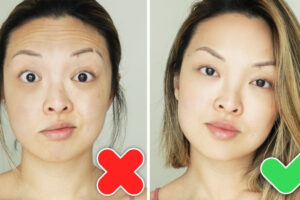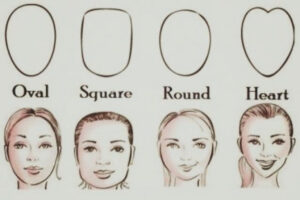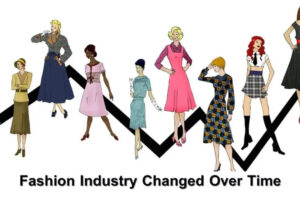1. Introduction
For as long as I can remember, I have been fascinated by fashion and beauty. As a young girl, I would pore over magazines, admiring the glamorous models and the latest trends. As I grew older, my interest in these topics only deepened. I began to see fashion and beauty as a way to express myself and to project an image to the world.
Over the years, I have read countless magazines, from the mainstream glossies to the niche publications. Through it all, I have gained a wealth of knowledge about the industry, as well as insights into the broader cultural trends that shape our ideas about beauty and style.
In this article, I will reflect on what I have learned from decades of reading fashion and beauty magazines. I will explore how these publications have evolved over time, how they shape our perceptions of beauty, and what role they play in our culture.
2. The Evolution of Fashion and Beauty Magazines
Fashion and beauty magazines have a long and rich history, dating back to the early 20th century. In their early days, these publications were primarily focused on showcasing the latest trends in fashion and beauty, as well as providing tips and advice for readers.
Over time, however, these magazines began to evolve. They started to feature more in-depth reporting and analysis, as well as commentary on broader cultural trends. They also began to experiment with different formats, such as incorporating more lifestyle content and using social media to engage with readers.
Today, fashion and beauty magazines are more diverse and inclusive than ever before. They feature a range of models, from different ethnic backgrounds, body types, and ages. They also cover a wider range of topics, from sustainability to social justice issues.
3. The Power of Images
One of the most striking features of fashion and beauty magazines is the power of images. From the glossy covers to the carefully curated photo spreads, these publications are designed to capture our attention and spark our imagination.
For better or worse, these images have a powerful impact on our ideas about beauty and style. They shape our perceptions of what is fashionable, desirable, and attainable. They can also create unrealistic expectations and perpetuate harmful stereotypes.
As readers, it’s important to be aware of the ways in which these images can influence our thinking. We should strive to consume media that represents a diverse range of bodies, styles, and perspectives. And we should remember that true beauty comes in many forms.
4. The Importance of Representation
In recent years, there has been a growing recognition of the importance of representation in fashion and beauty magazines. This means not only featuring models of different races, sizes, and ages but also showcasing a range of styles and perspectives.
Representation is important because it allows us to see ourselves reflected in the media we consume. It helps us feel seen and validated, and it can also inspire us to explore new styles and ideas.
While there is still a long way to go in terms of representation in the fashion and beauty industry, progress has been made in recent years. More and more magazines are featuring diverse models on their covers and in their pages. And some publications are even dedicated entirely to showcasing underrepresented communities.
However, representation isn’t just about the models. It’s also about the people behind the scenes – the designers, editors, and photographers. It’s important to have diverse voices shaping the content of these magazines, so that we can have a truly inclusive and representative industry.
5. The Politics of Beauty
Beauty has always been political. Our ideas about beauty are shaped by the cultural norms and values of our society. And these norms and values are often rooted in power dynamics related to race, class, gender, and other factors.
In fashion and beauty magazines, we can see these politics play out in subtle and not-so-subtle ways. For example, certain beauty standards may be emphasized or celebrated over others, creating a hierarchy of beauty that privileges some over others.
As readers, it’s important to be aware of the politics of beauty and to question the norms and standards that we are presented with. We should strive to embrace a broader range of beauty ideals and challenge the assumptions that underlie them.
6. The Pressure to Conform
One of the downsides of fashion and beauty magazines is the pressure to conform to certain beauty standards. From the latest trends to the must-have products, these publications can create a sense of FOMO (fear of missing out) that drives us to constantly consume and strive for more.
This pressure to conform can be especially harmful to young people, who are still developing their sense of self and identity. It can create unrealistic expectations and lead to feelings of inadequacy and low self-esteem.
As readers, it’s important to be mindful of this pressure and to resist the urge to conform. We should embrace our individuality and unique style, rather than trying to fit into a narrow mold.
7. The Intersection of Fashion and Feminism
Fashion and feminism may seem like unlikely bedfellows, but in reality, they have a long and complicated history. On the one hand, fashion has often been seen as a tool of oppression, used to objectify and sexualize women.
On the other hand, fashion can also be a powerful form of self-expression and a means of challenging gender norms and stereotypes. In recent years, we have seen a rise in feminist fashion and beauty, with brands and publications promoting body positivity, inclusivity, and gender fluidity.
As readers, it’s important to be aware of the intersection of fashion and feminism and to support brands and publications that align with our values. We should strive to promote a fashion and beauty industry that empowers rather than oppresses.
8. The Rise of Social Media
In recent years, social media has transformed the fashion and beauty industry in many ways. Platforms like Instagram and TikTok have given rise to a new generation of influencers and tastemakers, who have a huge impact on the trends and styles that we see in magazines and on the street.
Social media has also given consumers more power and influence than ever before. We can now easily connect with other like-minded individuals and discover new brands and products that align with our values and interests.
However, social media also has its downsides. It can create a sense of pressure to constantly curate a perfect image and can lead to feelings of FOMO and inadequacy.
As readers, it’s important to be mindful of the ways in which social media can impact our thinking about fashion and beauty. We should use these platforms to connect with others and explore new ideas, but we should also be aware of the pitfalls and strive to maintain a healthy perspective.
9. The Importance of Sustainability
Fashion and beauty magazines have historically been associated with a culture of excess and waste. However, in recent years, there has been a growing movement towards sustainability in the industry.
Sustainable fashion and beauty brands are prioritizing environmentally friendly and ethical practices, from using sustainable materials to minimizing waste and promoting fair labor practices.
As readers, it’s important to support these brands and to encourage the fashion and beauty industry as a whole to prioritize sustainability. We can do this by choosing to buy from sustainable brands, advocating for more sustainable practices in the industry, and making changes in our own consumption habits.
10. The Power of Self-Expression
At the end of the day, fashion and beauty magazines are all about self-expression. They give us a platform to explore our creativity, experiment with different styles, and express ourselves through our appearance.
While it’s important to be mindful of the potential downsides of fashion and beauty culture, we shouldn’t lose sight of the fact that these industries can be a powerful tool for self-discovery and self-expression.
As readers, we should embrace this power of self-expression and use fashion and beauty as a means of exploring our own identities and expressing ourselves to the world.
Conclusion
In conclusion, reading fashion and beauty magazines over the years has taught us many important lessons. From the politics of beauty to the importance of representation and sustainability, there is much to be learned from these publications.
As readers, it’s important to be critical of the messages that we are presented with and to question the norms and assumptions that underlie them. We should strive to embrace diversity, inclusivity, and sustainability in the fashion and beauty industry, and use these industries as a means of expressing ourselves and exploring our own identities.








